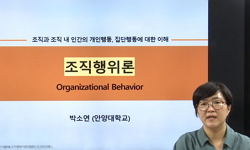본 논문은 조직 연구에서 이미지화와 스토리텔링의 영향력을 탐구하는 것을 목적으로 한다. 이미지와 메타퍼는 조직 연구에서 이미 완성된 조직을 표상하는 것이 아니라 통찰력을 통해 새...
http://chineseinput.net/에서 pinyin(병음)방식으로 중국어를 변환할 수 있습니다.
변환된 중국어를 복사하여 사용하시면 됩니다.
- 中文 을 입력하시려면 zhongwen을 입력하시고 space를누르시면됩니다.
- 北京 을 입력하시려면 beijing을 입력하시고 space를 누르시면 됩니다.
https://www.riss.kr/link?id=A105462093
- 저자
- 발행기관
- 학술지명
- 권호사항
-
발행연도
2018
-
작성언어
English
-
주제어
imaginization ; emergent image ; organization ; storytelling ; termite stories ; innovation ; 이미지화 ; 창발적이미지 ; 조직 ; 스토리텔링 ; 흰개미이야기 ; 혁신
-
등재정보
KCI등재
-
자료형태
학술저널
-
수록면
233-257(25쪽)
-
KCI 피인용횟수
0
- 제공처
-
0
상세조회 -
0
다운로드
부가정보
국문 초록 (Abstract)
창발적인 이미지 중 흰개미 이미지는 작고 점진적인 변화가 크고 의미있는 변화를 수반하는 조직 변화를 선도한다. 의미 있는 조직의 변화는 스토리텔링을 수반하는데, 조지 테리, 피터 풀게니, 스피디에 관한 흰개미이야기들은 조직에서 흰개미와 같은 행위에 대한 자유로운 영역의 힘을 잘 드러내어 준다. 흰개미 이야기들은 세심하게 기획된 잘 조직된 길을 추구하지 않고 혁신적인 변화를 추구할 새로운 방식을 제시해 준다. 모험을 주저하면서 맞서 싸우려하지 않는 구성원들에게 흰개미 이야기는 새로운 프로그램을 도출하는 계기를 제공해 준다. 이미지화는 상황을 재해독하도록 독려함으로써 새로운 통찰력을 발전시키는 학습의 기회를 끊임없이 부여하고 자기 주도적 조직이 출현하는 기회를 제공한다. 이와 같은 의미에서 이미지와 스토리는 이미 존재하는 조직을 기술하는 기능을 넘어서서 새로이 출현하는 조직을 만들어내는 창조적인 역할을 한다.
본 논문은 조직 연구에서 이미지화와 스토리텔링의 영향력을 탐구하는 것을 목적으로 한다. 이미지와 메타퍼는 조직 연구에서 이미 완성된 조직을 표상하는 것이 아니라 통찰력을 통해 새로운 조직을 만들어 내는 역할을 한다. 특히 이미지화는 이미지와 아이디어를 유동적으로 활용함으로써 새로운 스타일의 조직을 발전시키는 창의적인 방법을 제공한다. 자생조직의 본질을 이해하고 조직의 형성을 촉진시키는 능력을 갖추는 것은 격동과 변화의 시대에 핵심 역량으로 간주될 수 있다. 이미지화는 기계적인 이미지와 관료주의적인 한계를 넘어서는 조직을 개발할 때 강한 영향력을 발휘한다. 이미지화를 통해 구축된 혁신적인 이미지는 새로운 시각으로 경영을 바라보게 해 주며 탈중심화되고 유연한 형태의 자기 조직성을 부여한다. 이미지화는 조직의 넷워크가 지닌 창발적인 본질에 관심을 집중시키고 조직 내 깊이 뿌리박힌 전형적인 위계질서를 탈신비화하며, 기계적인 운영 방식을 깨뜨리고 관료화된 조직 구조의 청사진으로부터 벗어날 수 있게 한다.
창발적인 이미지 중 흰개미 이미지는 작고 점진적인 변화가 크고 의미있는 변화를 수반하는 조직 변화를 선도한다. 의미 있는 조직의 변화는 스토리텔링을 수반하는데, 조지 테리, 피터 풀게니, 스피디에 관한 흰개미이야기들은 조직에서 흰개미와 같은 행위에 대한 자유로운 영역의 힘을 잘 드러내어 준다. 흰개미 이야기들은 세심하게 기획된 잘 조직된 길을 추구하지 않고 혁신적인 변화를 추구할 새로운 방식을 제시해 준다. 모험을 주저하면서 맞서 싸우려하지 않는 구성원들에게 흰개미 이야기는 새로운 프로그램을 도출하는 계기를 제공해 준다. 이미지화는 상황을 재해독하도록 독려함으로써 새로운 통찰력을 발전시키는 학습의 기회를 끊임없이 부여하고 자기 주도적 조직이 출현하는 기회를 제공한다. 이와 같은 의미에서 이미지와 스토리는 이미 존재하는 조직을 기술하는 기능을 넘어서서 새로이 출현하는 조직을 만들어내는 창조적인 역할을 한다.
다국어 초록 (Multilingual Abstract)
Among emergent images, the termite image can produce small, incremental changes that lead to a big, meaningful organizational transformation. Meaningful and effective transformations are frequently accompanied by storytellings, and termite stories about George Terry, Peter Fulgeni, and Speedy illustrate the power of free-ranging interpretations of termite-like actions in organizations. These stories open new ways to innovative change without following a well-organized path of careful planning. To those who are not likely to fight against the odds, they offer chances to produce emerging programs. Imaginization offers organizational members the emergence of a self-organization and continuous learning options for developing new insight, for its process invites them to reinterpret the current situation. In this regard, images and stories in organization studies do not simply represent an already established organization but invite the emergence of self-organization.
The purpose of this paper is to explore the impact of imaginization alongside storytelling in organization studies. Images and metaphors encourage organizational members to create a new organization through innovation rather than to represent a ready-...
The purpose of this paper is to explore the impact of imaginization alongside storytelling in organization studies. Images and metaphors encourage organizational members to create a new organization through innovation rather than to represent a ready-made organizational structure. Imaginization offers a creative way to develop new styles of organization through mobilizing images and ideas. The capability of comprehending, facilitating, and promoting the process of self-organization can be regarded as a core competence in the age of turbulence and change. The art of imaginization is particularly influential in developing a structure beyond bureaucratic limits. Innovative images developed through imaginization provide decentralized, flexible forms of self-organizing design with a fresh perspective for management. Imaginization focuses upon the emergent nature of organizational networks, demystifies deeply ingrained hierarchial control, and breaks down the typical mechanical operation and blueprints of bureaucratic organizational forms.
Among emergent images, the termite image can produce small, incremental changes that lead to a big, meaningful organizational transformation. Meaningful and effective transformations are frequently accompanied by storytellings, and termite stories about George Terry, Peter Fulgeni, and Speedy illustrate the power of free-ranging interpretations of termite-like actions in organizations. These stories open new ways to innovative change without following a well-organized path of careful planning. To those who are not likely to fight against the odds, they offer chances to produce emerging programs. Imaginization offers organizational members the emergence of a self-organization and continuous learning options for developing new insight, for its process invites them to reinterpret the current situation. In this regard, images and stories in organization studies do not simply represent an already established organization but invite the emergence of self-organization.
목차 (Table of Contents)
- Abstract
- Ⅰ. Introduction
- Ⅱ. The Ontological Status of an Emergent Image in Organizations
- III. Imaginization with Storytelling: Fostering Creativity with Several Termite Stories
- Ⅳ. Conclusion
- Abstract
- Ⅰ. Introduction
- Ⅱ. The Ontological Status of an Emergent Image in Organizations
- III. Imaginization with Storytelling: Fostering Creativity with Several Termite Stories
- Ⅳ. Conclusion
- Work Cited
- 국문초록
참고문헌 (Reference)
1 Cornelissen, Joep P., "What are We Playing at? Theatre, Organization and the Use of Metaphor" 25 (25): 705-726, 2004
2 Daft, Richard, "Understanding the Theory and Design of Organizations" Cengage Learning 2010
3 Weick, Karl, "Theory Construction as Disciplined Imagination" 14 (14): 516-531, 1989
4 Boje, D. M, "The Storytelling Organization" 36 : 106-126, 1991
5 Taylor, Frederick, "The Principles of Scientific Management" Dover 1998
6 Senge, Peter, "The Fifth Discipline : The Art & Practice of the Learning Organization" Currency 1990
7 Taylor, James R., "The Emergent Organization : Communication as its Site and Surface" Psychology P 2000
8 Bakhtin, M. M, "The Dialogic Imagination" U of Texas P 1983
9 Denning, Stephen, "Storytelling in Organizations: Why Storytelling Transforming 21st Century Organizations and Management" Elsevier 2005
10 Gabriel, Yiannis, "Storytelling in Organizations : Facts, Fictions, and Fantasies" Oxford UP 2000
1 Cornelissen, Joep P., "What are We Playing at? Theatre, Organization and the Use of Metaphor" 25 (25): 705-726, 2004
2 Daft, Richard, "Understanding the Theory and Design of Organizations" Cengage Learning 2010
3 Weick, Karl, "Theory Construction as Disciplined Imagination" 14 (14): 516-531, 1989
4 Boje, D. M, "The Storytelling Organization" 36 : 106-126, 1991
5 Taylor, Frederick, "The Principles of Scientific Management" Dover 1998
6 Senge, Peter, "The Fifth Discipline : The Art & Practice of the Learning Organization" Currency 1990
7 Taylor, James R., "The Emergent Organization : Communication as its Site and Surface" Psychology P 2000
8 Bakhtin, M. M, "The Dialogic Imagination" U of Texas P 1983
9 Denning, Stephen, "Storytelling in Organizations: Why Storytelling Transforming 21st Century Organizations and Management" Elsevier 2005
10 Gabriel, Yiannis, "Storytelling in Organizations : Facts, Fictions, and Fantasies" Oxford UP 2000
11 Weick, Karl, "Sensemaking in Organizations" Sage 1995
12 Linstead, Sterve, "Postmodernism and Organizations" Sage 49-70, 1993
13 Mintzberg, Henry, "Organization Design: Fashion or Fit" 59 (59): 103-116, 1981
14 Aristotle, "On Rhetorics" Oxford UP 2007
15 Morgan, Gareth, "More on Metaphor: Why we cannot Control Tropes in Administrative Science" 28 : 601-607, 1983
16 Lakoff, George, "Metaphors We Live By" U of Chicago P 1980
17 Wheelwright, "Metaphor and Reality" Bloomington. Indiana UP 1962
18 Fayol, Henry, "Industrial and General Administration" Sir Isaac Pitman & Sons 1930
19 Morgan, Gareth, "Imaginization : The Art of Creative Management" Sage 1993
20 Morgan, Gareth, "Images of Organization" Sage 2006
21 Descartes. Rene, "Discourse on Method and The Meditations" Penguin 1968
22 Mintzberg, Henry, "Crafting Strategy" 65 (65): 65-74, 1987
23 Sievers, Burkard, "Characters in Search of a Theatre" 5 : 196-220, 1995
24 Collins, Jim, "Built to Last : Successful Habits of Visionary Companies" Harper-Collins 1994
25 Smith, Adam, "An Inquiry into the Nature and Causes of the Wealth of Nations" Oxford UP 2008
동일학술지(권/호) 다른 논문
-
공감으로서의 이야기: 레슬리 마몬 실코의 『의식』 다시 읽기
- 건국대학교 스토리앤이미지텔링연구소
- 김성옥(Kim, Sung-ok)
- 2018
- KCI등재
-
- 건국대학교 스토리앤이미지텔링연구소
- 김예니(Kim, Ye-nie)
- 2018
- KCI등재
-
스파이크 존즈의 〈그녀〉에서의 인공지능과 몸, 감정, 윤리적 주체의 문제
- 건국대학교 스토리앤이미지텔링연구소
- 박선화(Park, Sun-hwa)
- 2018
- KCI등재
-
- 건국대학교 스토리앤이미지텔링연구소
- 백두산(Baek, Doo-san)
- 2018
- KCI등재
분석정보
인용정보 인용지수 설명보기
학술지 이력
| 연월일 | 이력구분 | 이력상세 | 등재구분 |
|---|---|---|---|
| 2026 | 평가예정 | 재인증평가 신청대상 (재인증) | |
| 2020-01-01 | 평가 | 등재학술지 유지 (재인증) |  |
| 2017-01-01 | 평가 | 등재학술지 선정 (계속평가) |  |
| 2015-10-22 | 학회명변경 | 한글명 : 스토리 앤 이미지텔링 연구소 -> 스토리앤이미지텔링연구소영문명 : story & image telling of research center -> Story & Image Telling Research Institute |  |
| 2015-10-21 | 학술지명변경 | 한글명 : 스토리&이미지텔링연구 -> 스토리앤이미지텔링외국어명 : Story and Imagetelling -> Story & Image Telling |  |
| 2015-01-01 | 평가 | 등재후보학술지 선정 (신규평가) |  |
학술지 인용정보
| 기준연도 | WOS-KCI 통합IF(2년) | KCIF(2년) | KCIF(3년) |
|---|---|---|---|
| 2016 | 0 | 0 | 0 |
| KCIF(4년) | KCIF(5년) | 중심성지수(3년) | 즉시성지수 |
| 0 | 0 | 0 | 0.09 |




 DBpia
DBpia






